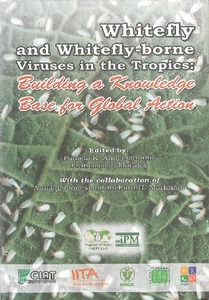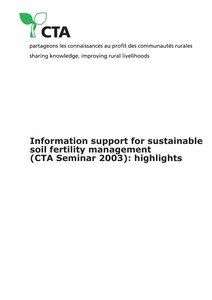‘Poor soils make poor people, and poor people make soils worse’. This is a situation that can be seen in many ACP countries. What information support can be offered...
Les évaluations des bilans en éléments nutritifs aident à déterminer les effets des pratiques agricoles sur la fertilité des sols. Selon les situations, plusieurs approches et méthodes ont été utilisées. Ce bulletin présente un apercu de la situation actuelle des études des bilans en elements…
"As in many Sub-Saharan countries, the issue of orphan-care has risen to the top of social protection agenda in Malawi, where the prevalence of orphaned children has dramatically increased because of early deaths of parents infected by the HIV/AIDS virus...In Malawi, most orphans, whether…
The programmme is a result of issues and concerns expresses by Malawians on food security, water and sanitation renewable energy, forest product and services, environment and indigenous knowledge. Consistent with article 10 of CCD and article 8 of Annex 1 (Regional Implementation Annex for…
Includes experience with land policy development in the region, the Malawi National Land Policy and its implementation strategy, the emerging land market, social protection and economic growth and DFID’s support to date. Among the options suggested to DFID are a more inclusive project, low cost…
Robin Mlolo, a farmer from Malawi?s lakeshore area, describes the many benefits to be gained from Faidherbia albida, the African winterthorn.
Henry Phombeya of Malawi?s Land Resource Centre outlines the benefits of various popular agroforestry species, including those offering soil fertility improvement.
The second volume of Land Reform, Land Settlement and Cooperatives for 2004 comprises eight articles that examine a range of areas central to land tenure activity. They provide a stimulating and, in some cases, critical set of perspectives on how best to tackle some of these issues.







